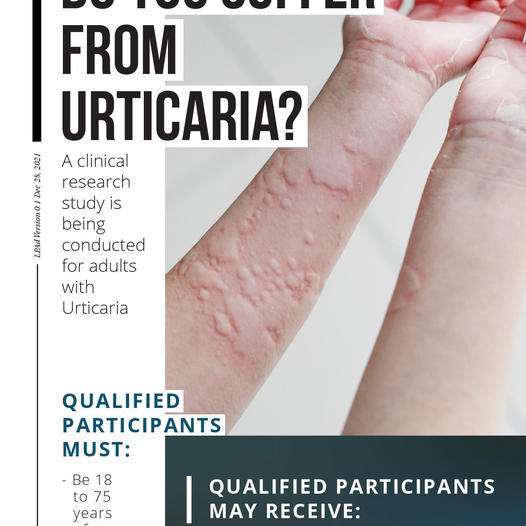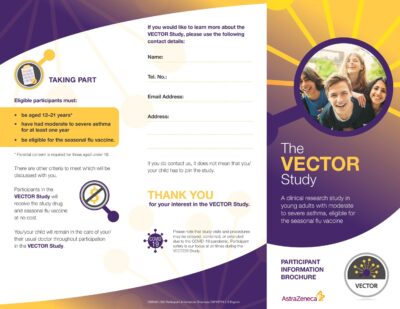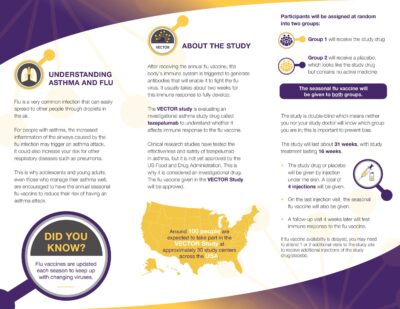Welcome To INQUEST
Clinical Research in Houston
Inquest Clinical Research LLC carrying out clinical research in Houston. Our extensive background in clinical research provided the roots from which our service has grown. Our research network, which now serves communities all over the country, creates environments where pharmaceutical research proves most effective by tapping into the vast patient resources of our independent-practice physicians. We have proven our ability to recruit primary care physicians. We have established a comprehensive network of primary care and specialty care physicians in the greater Houston area, and we have an experienced team of research coordinators and auxiliary staff to support our studies handling all phases of the research process.
Connecting with patients and practicing physicians in Houston. No insurance is required, and you may be reimbursed for your time and travel expenses.
Inquest
more>
Ongoing Clinical Research in Houston – Learn more>




Visit us if you are interested in participating in a clinical research study at Inquest Clinical Research Houston and Inquest Clinical Research Bay Town center or would like more information about our specific trials. Those who qualify may receive Reimbursement for study-related travel, study-related care from local doctors and study medication at no cost.
If you or anyone you know is interested in learning more about our research opportunities, please contact us by phone at (832) 606-2053– Houston, Baytown, TX
1-Asthma
Asthma is a lung disease that lasts a long time. It causes the airways to become irritated and narrowed, making breathing difficult. Asthma that is severe might make it difficult to speak or be active. Asthma can strike at any age, although it strikes more frequently in persons under the age of 40. Symptoms of asthma include:
- Coughing, particularly late at night or early in the morning
- Breathing heavily and a whistling sound while breathing
- Breathing difficulties
- Chest tightness, discomfort, or pressure
- Sleeping problems as a result of breathing difficulties
Mild asthma episodes are more prevalent than severe asthma attacks. The airways usually free up in a few minutes to a few hours. Severe episodes are less common, but they continue longer and need immediate medical attention. It will become more difficult to breathe without prompt treatment, such as with an asthma inhaler or bronchodilator. If individuals use a peak flow meter, the value will most likely be less than half of the regular or standard peak flow reading.
2-COPD
Chronic obstructive pulmonary disease (COPD) is a long-term inflammatory lung condition that creates airflow obstruction in the lungs. COPD can make it difficult to work or simply do basic everyday duties. COPD can also make people more susceptible to COVID-19 infection. The following are some of the most common COPD symptoms:
- increased breathlessness – this may occur just when exercising at first, and people may occasionally wake up feeling breathless at night.
- a chronic chesty cough with mucus that refuses to go away
- Chest infections occur often.
- wheeze that doesn’t stop
Although medication can help reduce the course of symptoms, they normally become worse with time and make everyday tasks more difficult. COPD is curable, despite the fact that it is a progressive condition that worsens with time. Most patients with COPD can obtain good control of the disease and life quality with effective care, as well as a lower chance of developing additional illnesses.
3-HTN
Hypertension (high blood pressure) is a frequent disorder in which the blood’s long-term force on the artery walls is high enough to produce health problems such as heart disease. There are two numbers in a blood pressure measurement. The systolic blood pressure is the highest figure, and it measures the pressure on the blood vessel walls when the heart beats or contracts. The diastolic blood pressure is the lowest figure, and it measures the pressure in the blood vessels between beats when the heart is resting.
| Category | Blood Pressure |
| Normal | Under 130/80 mmHg |
| Stage I Hypertension (mild) | 130-139/OR diastolic between 80-89 mmHg |
| Stage 2 Hypertension (moderate) | 140/90 mmHg or higher |
| Hypertensive Crisis (get emergency care) | 180/120 mmHg or higher |
Since high blood pressure has no signs, the healthcare professional will use a blood pressure cuff to monitor the blood pressure. Every yearly checkup or appointment, the blood pressure is routinely checked. There are certain things people may do to lower the chances of acquiring high blood pressure. These include consuming well, getting enough exercise, and keeping salt consumption under control.
4-OCD
Obsessive-compulsive disorder (OCD) is a mental condition characterized by recurrent unpleasant thoughts or feelings (obsessions) or a strong need to repeat a behavior. Obsessions with OCD are intrusive, recurring, and unwelcome thoughts, impulses, or visions that create anguish or worry.
Doctors are baffled as to why certain people suffer from OCD. Anxiety might exacerbate symptoms. Women are somewhat more likely than males to have it. Signs are more common in teenagers and young adults.
The following are some of the risk factors for OCD:
- OCD in a parent, sibling, or kid
- Changes in the physical structure of specific areas of the brain
- Tics, depression, or anxiety
- Trauma-related experiences
- Abuse as a youngster, either physical or sexual
Being a perfectionist — someone who demands immaculate outcomes or performance, for example — is not the same as having OCD. OCD thoughts aren’t only extreme anxieties about actual problems or a need to keep things neat or organized in a particular way.
5-Major depression
Depression is a type of mood illness characterized by a continuous sense of melancholy and a loss of interest. One may have serious depression, also known as clinical depression, if they feel dismal and despair all of the time. It may be hard to work, concentrate, relax, eat, and enjoy friends and hobbies if people are suffering from significant depression.
Although depression might strike just once in a lifetime, most people have several bouts. Symptoms may occur most of the day, virtually every day, during these periods, and may include:
Grief, weeping, loneliness, or a feeling of hopelessness
- Even over little issues, angry outbursts, impatience, or frustration might occur.
- Loss of pleasure or interest in most or all usual activities, such as sex, hobbies, or sports
- Insomnia or sleeping too much are examples of sleep problems.
- Due to exhaustion and a lack of energy, even simple chores need additional effort.
- Reduced food cravings and weight reduction, or enhanced food cravings and weight gain
- Anxiety, restlessness, or nervousness are all symptoms of anxiety.
Major depression cannot be diagnosed with a blood test, X-ray, or other scientific test. However, the doctor may order blood tests to rule out any other medical issues with symptoms that are similar to depression.
6-Urticaria
Urticaria is a skin condition that causes red, itchy welts. As the response progresses, the welts grow in size and emerge and fade in frequency. Hives that last for a long time can be highly unpleasant, interfering with sleep and everyday activities. Antihistamines and anti-itch medicines give relief for many people. Chronic hives can cause the following signs and symptoms:
- As the response progresses, batches of red or skin-colored welts (wheals) can emerge anywhere on the body.
- Welts that vary in size, form, develop and disappear repeatedly as the reaction progresses.
- Itching that can be rather intense
- Lips, eyelids, and inside the neck swell painfully
- A propensity for signs and symptoms to flare up in response to stressors including heat, activity, and stress.
Chronic hives do not put you at danger of having a severe allergic response (anaphylaxis). However, if patients get hives as a result of a severe allergic response, seek medical attention right once. Dizziness, difficulty breathing, and swelling of the lips, eyelids, and tongue are all signs and symptoms of anaphylaxis.
7-SHINGLES
Shingles is a terrible rash caused by a viral infection. Anyone who contracts it has had chickenpox before, frequently decades ago. These two diseases are caused by the same virus, varicella zoster.
The symptoms of shingles normally only affect a small portion of one side of your body. The following are examples of signs and symptoms:
- Pain, burning, numbness, or tingling are some of the symptoms you may experience.
- Touch sensitivity
- A red rash that appears a few days after the discomfort has subsided.
- Itchy blisters with fluid within that burst apart and crust over
- Upset stomach
- Fever, chills, and headache
A physical exam and questions about patient’s medical history and symptoms might help the doctor identify shingles. Small quantities of material from the blisters can also be tested. Antiviral medications can speed up the recovery and reduce the chance of problems. They work best if patients take them within three days of the onset of the rash, so consult the doctor almost once.
7-SHINGLES
Shingles is a terrible rash caused by a viral infection. Anyone who contracts it has had chickenpox before, frequently decades ago. These two diseases are caused by the same virus, varicella zoster.
The symptoms of shingles normally only affect a small portion of one side of your body. The following are examples of signs and symptoms:
- Pain, burning, numbness, or tingling are some of the symptoms you may experience.
- Touch sensitivity
- A red rash that appears a few days after the discomfort has subsided.
- Itchy blisters with fluid within that burst apart and crust over
- Upset stomach
- Fever, chills, and headache
A physical exam and questions about patient’s medical history and symptoms might help the doctor identify shingles. Small quantities of material from the blisters can also be tested. Antiviral medications can speed up the recovery and reduce the chance of problems. They work best if patients take them within three days of the onset of the rash, so consult the doctor almost once.
8-Hypercholesterolemia
A high blood cholesterol level is referred to as hypercholesterolemia. Cholesterol is needed for a variety of body processes, including the manufacture of cell membranes and some hormones, as well as the generation of fat-digesting proteins. Excessive cholesterol can also collect in other physiological tissues, such as the tendons or under the skin of the eyelids, in inheritable types of hypercholesterolemia. Familial hypercholesterolemia is the most frequent of these disorders.
There seem to be no symptoms in the early years. The following are some of the symptoms that may appear:
- Xanthomas are fatty skin deposits seen on the hands, elbows, knees, ankles, and around the eye’s cornea.
- At an early age, chest discomfort (angina) or other indications of coronary artery disease may be evident.
- Cholesterol deposits in the upper and lower eyelids (xanthelasmas)
- Toe sores that don’t seem to go away
- Walking with one or both calves cramped
- Unexpected stroke-like indications include difficulty in communicating, facial drooping, arm or leg weakness, and loss of balance.
The only way to check for the disease is to do a lipid profile, which is a blood test that measures cholesterol levels in the blood. The total cholesterol, LDL cholesterol, HDL cholesterol, and triglyceride levels are usually checked during this test. A total cholesterol level of more than 200 mg/dL is regarded high, while an HDL level of less than 40 is deemed inadequate. However, whether or not a lipid profile is regarded safe relies on whether or not a person is at risk for or already has heart disease. Patients who have been diagnosed with hypercholesterolemia are urged to change their diet and exercise regularly.
9-Diabetic Neuropathy
Diabetes can cause diabetic neuropathy, which is a kind of nerve injury. It is the most prevalent consequence of diabetes mellitus (DM), affecting up to 50% of type 1 and type 2 diabetic individuals. It can manifest itself in a variety of ways, all of which appear to be linked to blood glucose levels that have been elevated for an extended period of time. To avoid it, patients must work with their doctor to keep the blood sugar under control.
Diabetic neuropathy is divided into four categories. Screening for diabetic neuropathy should start immediately after a person is diagnosed with type 2 diabetes, and five years after a person is diagnosed with type 1 diabetes, according to the American Diabetes Association. After then, yearly screening is advised.
10-Attention Deficit Disorder
ADHD is one of the most prevalent pediatric neurodevelopmental diseases. It is most commonly diagnosed in childhood and lasts far into adulthood. It is more common in boys than in girls. ADHD is not curable or preventable. However, early detection of ADHD, as well as a strong treatment and education plan, can help a kid or adult with ADHD manage their symptoms. There are three forms of ADHD, depending on which symptoms are the most prominent in a given person.
Probable causes and risk factors being investigated by scientists include:
- Injured brain
- Environmental hazard exposure while pregnancy or at a young age
- During pregnancy, you should avoid drinking and smoking.
- Premature childbirth
- Low birth weight
In most circumstances, a balance of behavior medication and therapy is the most effective treatment for ADHD. Frequent monitoring, follow-ups, and implementing modifications as needed are all part of good treatment regimens.
11- Hypothalamic Obesity
Hypothalamic obesity is a kind of obesity that occurs when the hypothalamus does not work properly. The hypothalamus is a brain region that produces hormones that regulate bodily processes including sleep, body temperature, and appetite. The signs and symptoms of hypothalamus obesity differ depending on the reason.
- Extreme hunger
- Fast weight gain and inability to feel ‘full’
- Decreased rate of metabolism
- Physical activity dropped.
- Excessive drowsiness during the day.
Hypothalamic obesity does not have a single therapy. However, several drugs have been used to treat hypothalamic obesity with some effectiveness. The overall objective of therapy is to facilitate weight loss and hunger management.
Inquest Clinical Research LLC, Houston is currently seeking qualified patients for a number of study opportunities.
Participants in a clinical trial contribute to the development of new therapies while learning about their possible treatments. Our extensive background in academic research provided the roots from which our service has grown. Our research network in Houston and Nationwide, which now serves communities all over the country, creates environments where pharmaceutical research proves most effective by tapping into the vast patient resources of our independent-practice physicians..
How can you get onto a trial in Houston?
We Appreciate your interest.
